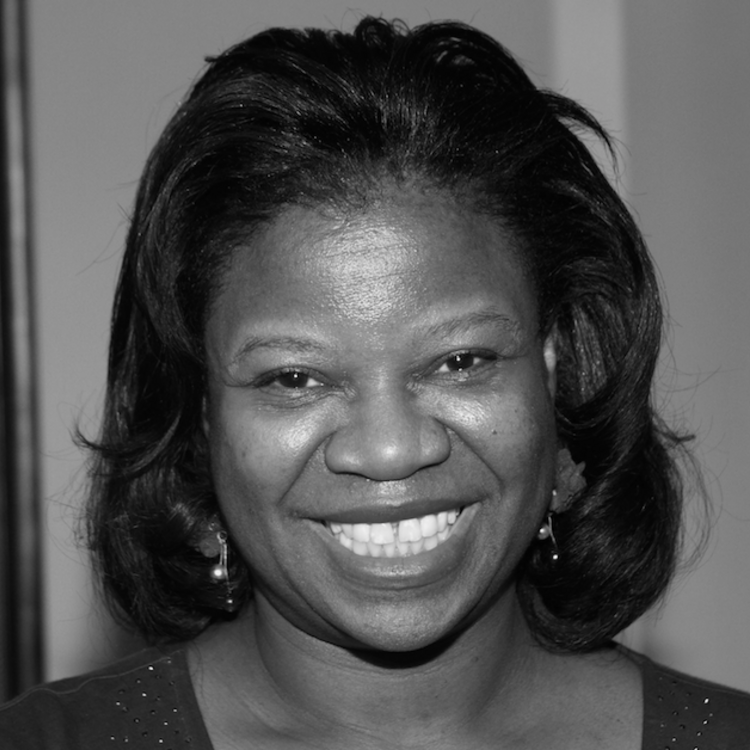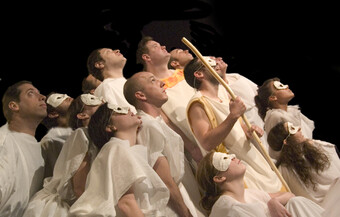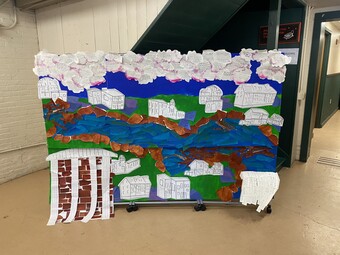The Creative Commons, or “Commonly Creative”
This piece continues a partnership between HowlRound and the League of Professional Theatre Women (LPTW). In 2012, LPTW launched its journal WITOnline, and in 2015, it will become a searchable resource for the field, building a women's history of theatre through in-depth profiles, interviews, and articles. Find all WITOnline-HowlRound content here.
Any playwright or other theatre artist ought to have some familiarity with the copyright law, not only to protect their own rights to their creative work, but also to understand what kind of work they can use created by somebody else—no one works in a vacuum. Artists are constantly riffing and expanding upon the images and ideas that they see and hear around them. But as a general matter of copyright law, only the person who creates the work has the right to copy and/or use it. Does that mean that when you quote something written by another writer, or sample music for your score, or incorporate someone else’s artwork into your design, you’re infringing their copyright? Does it mean that no one can ever use your work without your permission? What if you find it on the Internet—isn’t that free for public use? The lawyerly answer is: “It depends.”

There is a legal principle known as “fair use,” which permits artists and scholars to use copyright-protected work without the permission of the copyright owner. The US Copyright Office generally describes fair use as:
a legal doctrine that promotes freedom of expression by permitting the unlicensed use of copyright-protected works in certain circumstances. Section 107 of the Copyright Act provides the statutory framework for determining whether something is a fair use and identifies certain types of uses—such as criticism, comment, news reporting, teaching, scholarship, and research—as examples of activities that may qualify as fair use.
So, what do you do if you want to use someone else’s work as a creative jumping off point? “Appropriation art” is in the news these days; just ask artist Richard Prince, who’s been sued multiple times for copyright infringement and won, based on the “fair use” principle. You could also ask co-creators Erin Pike, Courtney Meaker, and Hatlo who sparked fair use controversy earlier this year with their show thatswhatshesaid. But if you’re more risk averse, one way you can freely use the work of others—and permit your work to be freely used—is through Creative Commons. According to its website: “Creative Commons helps you legally share your knowledge and creativity to build a more equitable, accessible, and innovative world.” The site provides a variety of copyright licenses through which you can use and adapt the work of others with their permission, and through which you can permit your own work to be used in a similar fashion. It doesn’t mean that copyright in the works no longer exists, but that the copyright owners have granted a royalty-free license for others to use the work in certain specified ways and on specified terms. For example, “licensees must credit the licensor, keep copyright notices intact on all copies of the work, and link to the license from copies of the work. Licensees cannot use technological measures to restrict access to the work by others.”
So why can’t you just throw your creative work to the winds and let anybody use it any way they choose? The simple answer is you can…but then you have no control over how other people use it, and whether they credit you.
The website also states:
Our licenses do not affect freedoms that the law grants to users of creative works otherwise protected by copyright, such as exceptions and limitations to copyright law like fair [use]. Creative Commons licenses require licensees to get permission to do any of the things with a work that the law reserves exclusively to a licensor and that the license does not expressly allow.
Creative Commons also offers you a way to search (via other search engines, such as Google and YouTube) for works that you can either use “for commercial purposes” or “modify, adapt or build upon.” However, the website cautions the user that Creative Commons “has no control over the results that are returned [from the search]. Do not assume that the results displayed in this search portal are under a CC license. You should always verify that the work is actually under a CC license by following the link.”
So why can’t you just throw your creative work to the winds and let anybody use it any way they choose? The simple answer is you can…but then you have no control over how other people use it, and whether they credit you. Even more to the point, you may not be able to prevent others from making money off of your freely donated work by licensing it to others. Photographer Carol Highsmith recently brought a lawsuit against Getty Images and others alleging just that. According to her complaint, Highsmith “has made her photographs available to the public for free through the US Library of Congress” since approximately 1988.

However, on December 19, 2015, she received a letter stating that her use of one of her own photographs on her own website did not have “valid licensing” from Alamy, a provider of digital imagery that was licensing the photograph to others. (Cue the train entering the irony tunnel.) The letter stated that “[u]se of imagery represented by Alamy without proper licensing is considered copyright infringement and entitles Alamy to pursue compensation for infringing uses.” Highsmith, not content with just pointing out her ownership of the photo to Alamy and getting them to drop the matter, decided to sue for violation of the Digital Millennium Copyright Act, “based upon the Defendants’ gross misuse of Ms. Highsmith’s photographs—more than 18,000 of them.”
As you can see, the issue of what is protected by copyright law on the Internet is a sticky one, even for those who are in the copyright business. So, for your information (and in conclusion): Creative Commons is one way of using images and texts, and to make your own work available for use by others. But even their licenses are not limitation-free.











Comments
The article is just the start of the conversation—we want to know what you think about this subject, too! HowlRound is a space for knowledge-sharing, and we welcome spirited, thoughtful, and on-topic dialogue. Find our full comments policy here
I think this is a great article on some of the aspects of copyright infringement, and fair use. My one question though, is what about using art in essays (assuming citation)? For example, a new trend on YouTube is to analyze films through video essays, discussing a method, and then showing a scene where the method is utilized. Aught those be protected? While it's not necessarily censorship, as one can write an article on a film, referencing exact times from a film, is it censoring the way we're allowed to discuss art?
I'd like to thank you for bringing up this topic, because I do agree that artists should understand copyright laws, and what we're allowed to use, and how to use it, what resources are available to us, and bringing awareness to the topic.